Karen Myers, American self-published author, provides a helpful and comprehensive case study of how she sourced new book covers for her latest fantasy series.
Two years ago when I started writing The Hounds of Annwn series, I used images by a prolific Russian surrealist artist that I found on stock photo sites. (You can see those covers here. Starting a new fantasy series, The Affinities of Magic, I knew I wasn't going to find what I needed there, so I decided to commission cover art. It’s been a fun learning experience, and I couldn’t be happier with the results.
Starting Up the Learning Curve
Like everyone, I asked for recommendations and got a lot of them, but almost none of them were in my genre (Fantasy), and there’s little that an excellent artist who specializes in photorealistic Romance shots can do to help me.
Genre is the first and most important consideration. A good cover should (1) indicate the book's genre at a glance, and (2) make the reader want to find out more.
To learn the rules of covers for your genre, look at similar books. (I added to this sample one of my older books as a comparison for legibility of author name.)
Fantasy as a genre tends towards illustrated covers instead of photo montage, so one way to scream “Fantasy” is to use an illustration. I wanted an illustrator, and I was going to have to go it alone, learning as I went along. And I had a budget to consider…
Who Does What
First, ask yourself how much responsibility to take. Some people want to spell out a rough concept and leave the rest to a competent partner, others want to do the whole thing themselves. Personally, I wanted to do all I could myself, to maintain as much independence as possible, and let the artist do the things I can’t do.
I knew from the start that I would take responsibility for the design/placement of the author name (cover & spine), the imprint (spine), all back cover text, and the bar code. My cover artist could just use placeholders for those.
I especially own the branding requirements. I wanted the author name to be consistent across all of my books for all genres. I wanted the series covers to look related. And I wanted the genre to be clear. Author name was already established for the first series, so I knew the font, size, and placement (I’ll allow the color to vary). Genre required a clear “Fantasy” signal. That left “series” (see below).
Refining the Scope
When I think of book covers, I consider the whole series requirement, not just the first book. This allows economies of scale and gives me an opportunity to re-use many elements.
In this particular case, the series involves the resurrection from ruin of a wizard guild house and its conversion to a magical academy. Rather than depict the main character, I chose the academy. It would be interesting and easy to depict its physical changes over time, book after book, and the image would be both clear and recognizable for each new entry in the series. Subsequent covers would cost much less than the first one, because only some elements of the cover would need to be repainted rather than the entire scene.
Short works would also need covers, but I didn’t want to spend as much on them. Each story and novel includes a sub-plot element of an animal or plant being investigated for magical potential, and I decided to manifest that as a vignette. For long works, that vignette would go on the back cover, but for short works (which don’t need a back cover, being too short to print), that back cover would become the front cover, with the vignette in place. This allowed an easy visual cue for the reader to distinguish between long and short works, while clearly basing them both in the same series.
I didn’t come up with this concept all at once, but in the course of a couple of conversations with my cover artist. The result was cost components for the entire series:
- Initial wraparound background and layout for long works
- Updated limited painting (improved academy) for each new long work
- Each vignette (on back cover of long work, or on front cover of short work)
The result is a series of reasonable and predictable prices that allow for maximum reusability.
To re-use material like this requires a design partner who understands the purpose. I understand layout requirements for the end product and thumbnail visibility issues, but I can’t draw or create images to those requirements. I was able to advise the artist about the areas I specialized in, and he was able to concentrate on his specialty: images. It made for an excellent division of labour.
Note: since I was using a wraparound cover and would continue to use it over the life of the series, I could not predict exact spine width for each book (page count), so made sure we accounted for that when we talked about overall size by using a maximum spine width in the design.
Asking for Submissions
I started by going straight to Deviant Art where I found tons of great artists and contacted over a dozen, but only one replied. I switched to eLance and had much better success. Of the many who replied, I singled out two individuals and one commercial art firm for auditions. The commercial firm was slow to respond, and expensive, and ultimately never submitted an audition, but both the individuals did, and their prices were quite reasonable.
I could have worked with either vision, but the two-pager better captured the essence of Fantasy that I had in mind, and more clearly made the decrepit building a “character” instead of a background.
The single-pager had more of a Steampunk vibe, or perhaps of a Victorian novel. Signalling “Fantasy” was overwhelmingly important to me.
Moving from Audition to Final Product
The key thing in working to the final version is to do it as a series of iterations. Try never to waste your artist’s efforts by moving backwards (changing your mind).
Pay attention the first time you send a series of corrections and suggestions back. The artist should react professionally, not defensively.
I gave as much guidance as I could for the initial design, with crude diagrams (I can’t draw) and schematic layouts to help.
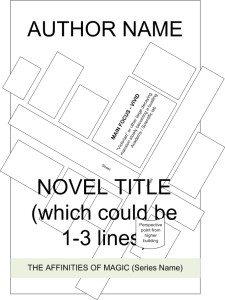 Take advantage of accidents, too. The artist included a straight line in the background that hinted (to me) at a river and I asked him to make that real. He hinted at an alley and we made that real. I removed logical inconsistencies in his iterations (window treatments, architecture, vines).
Take advantage of accidents, too. The artist included a straight line in the background that hinted (to me) at a river and I asked him to make that real. He hinted at an alley and we made that real. I removed logical inconsistencies in his iterations (window treatments, architecture, vines).
I also sent him style hints. For example, I suggested this fantasy city could be European, Oriental, or something wholly new and alien – colorful, exotic, whatever. Both my young artists were British and apparently “Fantasy” to them meant European, so I sent strong hints about colourful buildings with links to Baroque eastern European town centres. The more images you can include that provide any guidance, the better.
The most challenging thing was handling thumbnail legibility. My artist had designed book covers before but had never focused on the thumbnail issue. I kept moving him until it matched or exceeded other thumbnails in the genre.
Adding Special Touches
Don’t forget you can reap other goodies from your artist. In my case, I decided I could include a greyscale version of the vignette inside each work.
I also asked for a sigil of the wizard’s guild to use as a series symbol on the title page (Torch & Scroll) and fleurons I could shrink to use as section dividers, chapter ends, and book end markers.
Maintaining Good Relations
I like to get my covers done early in the process, when I’m just starting to write, not at the end when the work is done. That allowed me to have a two-way collaboration with the artist, where his iterations helped me drive the setting of the story. I didn’t know it would be set in a river port before we updated the cover iteration, for example, or just what would be in that compound before I had to finalize it to give him guidance. I sent him Chapter 1 so he could see how his work influenced the story and promised him a copy of each book as it came out. I made sure I knew how he wanted his name and link on the copyright page and offered to provide references. When we finished the cover for the first book, I checked to make sure he was still comfortable with the pricing for the rest of the series, now that he knew better what it would be like.
To make it easy to share this great advice with other indie authors, here's our suggested tweet:
“Authors – #toptips on how to create the best cover design for your #selfpub book http://wp.me/p44e6Y-1IV via @IndieAuthorALLi”
Please feel free to ask questions of Karen or to share your own book cover design tips via the comments below.

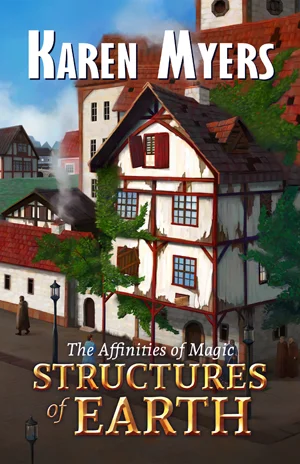

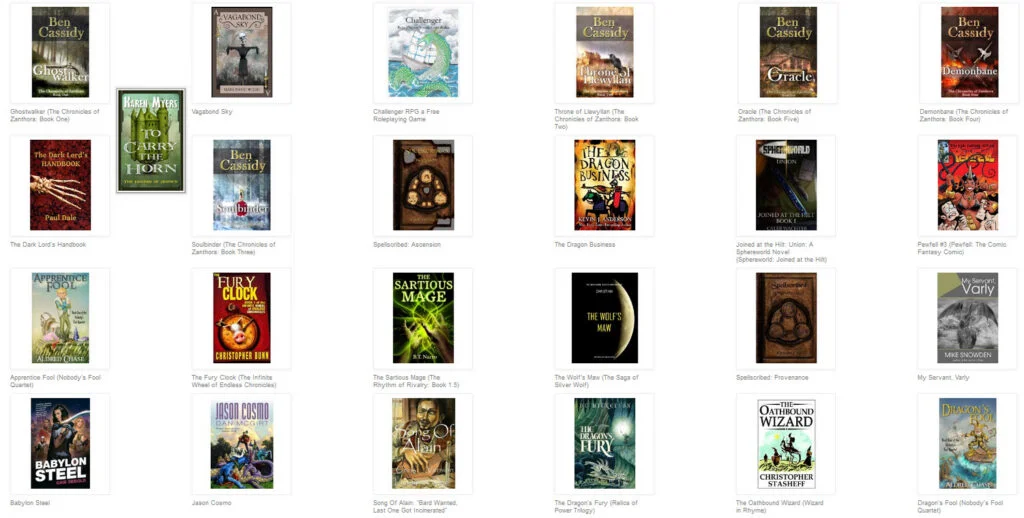
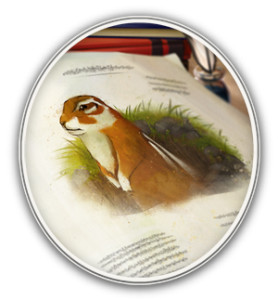
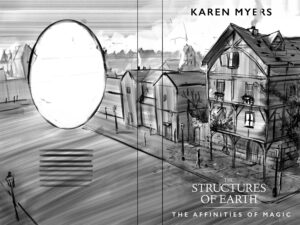


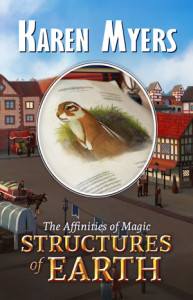
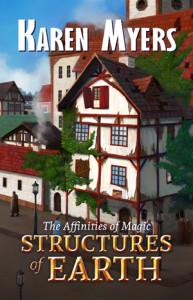




[…] illustrator’s method of work begins with conceiving a relevant scene from the book after devouring the entire manuscript. It […]
I’m a professional book illustrator and often hear “horror stories” from new clients that get burned either by a shady guy pretending to be an artist, or a young artist who doesn’t know what they’re doing.
Generally there are several things you can do to avoid having this happen to you: Have a simple contract that spells out what your rights are (you want exclusive book cover rights so the artwork doesn’t show up on another book), and you need to know what the charge will be if extra work is needed to change something or polish it up. As someone noted before, you generally need to pay 1/2 half up front and the rest on completion of the cover.
If possible, talk to other clients the artist has worked for or check out the artist’s client endorsements page. If an artist doesn’t have a good track record — look out.
You do get what you pay for. For maximum book sales, it is good to hire a pro as people do judge a book by its cover, especially on Amazon.
Finally, most pros don’t work “on spec.” They don’t expect to do work for free, including preliminary sketches and so forth. Check out their web site and see what they can do. If their style and vision is what you want, then hire them. The extra cost will pay off in greater book sales.
Hope this is of help.
–Duncan Long
http://duncanlong.com/art.html
Hello,
I would just like to make a quick comment that I love to do editorial and cover illustrations.
I am still working on my website & portfolio and the few illustrations that are there are editorial ones. At the moment though I am just trying to pay the bills so it is hard to find time to do what I love. But I’m also working on several pieces at once, so I’ll periodically be uploading more stuff soon as well as some more examples of relevant book covers.
As a creative though, I’m never quite ‘finished’ anything and for some reason I am reluctant to show people my work.
The main reason for the comment is to say that I’m here, I’m ready & willing enough, and if you check out my website you can easily make an enquiry online directly on my website:
http://www.lesliedeanbrown.com/illustration/online-quote/
Thanks very much,
Leslie
The HTC Legend is loaded with hidden little design touches that are certain to delight you.
There are still other tweaks within SBSettings that just make life more easy.
After upgrade CHT-dongle may also go back in manufacturer default option.
This is great! I didn’t know about eLance, so I’ll have to check them out. I actually comb deviantArt a lot and interview illustrators on my blog for fantasy and sci-fi indie authors, so I can totally relate to the difficulty in getting in touch with an artist!
I think another thing authors have a hard time with is a realistic budget. Art is quite expensive… maybe not as expensive as an editor, but expensive all the same!
Hello Karen, and thank you very much for this excellent and useful post. It’s very timely for me. I was about to dive into the DeviantArt pool, but now it looks like elance is the way to go. And your tip on decorative touches is great.
Your covers look great: professional, well thought out, inviting.
In all, I’m really glad you happened along, and I’d better go retweet that link….
Just wondering what kind of contract you used for your collaboration with the illustrator and how you negotiated the fee/royalty?
Caroline, sorry to be A YEAR LATE responding, but I only just saw your question about illustrator contracts.
I put together a very simple structure. There’s a main document, which sets such things as 50% up front, what happens if someone wants to cancel, etc. That gets signed.
Then each individual project gets a one-page addendum which lists the price for that project, any special circumstances, any differences from the terms of the main document. That gets signed separately.
If you’d like to see examples, please email me at [email protected].